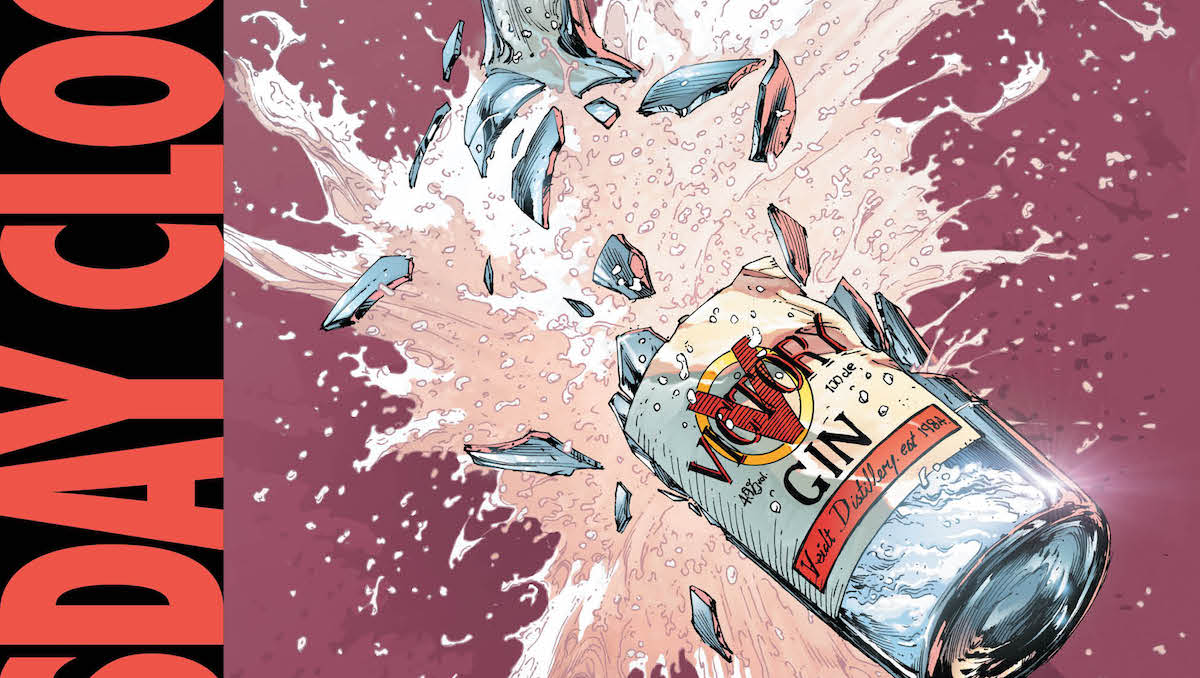This past week I finished two books that have one thing in common: their covers both reference The Great Wave off Kanagawa, the famous woodblock print by Hokusai that you’ve probably seen countless times, used in countless contexts. One cover has an extreme close-up of a portion of the wave; the other depicts the wave in a close-up of a rat’s eye, modified to show the New York City skyline being threatened by the wave, which has rat-shaped claws of foam. The print shows up within the stories themselves, too, taking on different meanings from the characters.
Tomorrow, and Tomorrow, and Tomorrow by Gabrielle Zevin
This book is a story about a fictional videogame studio, Unfair Games, and the long history of its two founders, Sam Masur and Sadie Green. It’s also a love story—or maybe it’s several love stories, not always centered on Sam and Sadie. Sam and Sadie first meet at a young age in Los Angeles when they’re both spending a lot of time in the same hospital—Sam because he’s having foot surgeries due to a bad car crash, and Sadie because her sister is getting leukemia treatments. The two bond over Super Mario Bros and Duck Hunt, and wind up staying in touch for several years, sharing other videogames with each other.
Then, after a six-year estrangement, they run into each other again—this time in Boston, where Sadie attends MIT and Sam attends Harvard. Their chance meeting leads to working on a videogame together, and Unfair Games is born, bringing them fame and fortune, as well as a lot of headaches and heartaches.
I’d heard a lot of my book friends talking about this book recently, so I bought myself a copy, and right from the start I was intrigued by various similarities with my own life. I was also in Boston in the late ’90s, attending college and majoring in math (despite not having a real love for it), and I was sharing videogames on 3.5″ disks with a girl I liked. I even lived in the same freshman dorm as Sam, and also had a charismatic roommate who did theater. The difference is that we didn’t get rich and famous making groundbreaking videogames, but we are happily married still, so I’m not complaining.
Tomorrow, and Tomorrow, and Tomorrow is both about the games that Sam and Sadie make together and the worlds that they inhabit—and the way they intersect. Sam’s foot never entirely healed, and living in Boston in the winter is difficult; he expends a tremendous amount of energy trying to ignore his pain, and this sometimes winds up informing the games he makes. Sadie has her own issues to work through, not least of which is being a woman at MIT and, later, in the videogame industry; despite being the programmer, everyone tends to assume that Sam is responsible for the bulk of the games they make together.
The Great Wave makes its appearance in Sadie’s apartment in college, and when Sam and Sadie design their first game, about a young child who is swept out to sea, they decide to style its graphics after the woodblock print. The book explores ideas of identity—Sam, like the author herself, has a Jewish father and a Korean mother—as well as appropriation, something that a lot of us weren’t really thinking about back in the ’90s.
I have to admit that some of what made this book great for me is the nostalgia—taking a trip through the timeline of videogame development from the ’80s until now, even through the lens of a fictional company, shows how much things grew and changed, from the types of games we played to the sorts of people who were making them. It reminded me a little of YOU by Austin Grossman, now about a decade old, and now I’m itching for a re-read. But I also really grew to like the characters of Tomorrow, and Tomorrow, and Tomorrow, both Sam and Sadie but also the many others who pass through their lives along the way.
Wrath by Shäron Moalem and Daniel Kraus
Wrath is a very different sort of tale—it does feature a tech company that generates a lot of buzz and then has various ups and downs, but it is not a love story and is a lot less pleasant. Noah Goff is the CEO of EditedPets, a company that uses a post-CRISPR technology developed by his chief scientist Sienna Aguirre to create genetically modified pets. First came the FireFish, the glowing goldfish that put EditedPets on the map, and then the ChattyBird (a talking budgie that, well, was a little too chatty), and then the EasyPony, a $125 million bust. EditedPets really needs a win, and Noah thinks he has one in Sammy, a rat that has been given human intelligence (and a cuter appearance).
Sammy can “talk” using an iPad app with a modified keyboard, he can scoot around on his SammyWagon, and you’ll finally have a pet that you’ll actually be able to understand and who understands you. There’s just one problem: Sammy’s brain is growing too fast for his skull, which leads to a burst of abnormally aggressive behavior before a gruesome death. Sienna’s working on a solution, which she needs in time for Noah’s appearance at the upcoming Pet Expo.
Of course, going into this book, you know what’s going to happen, right? All you need is Ian Malcolm to show up with his “your scientists were so preoccupied…” quote. Yep, creating a bunch of rats with human-level intelligence and a time-bomb self-destruct mode turns out to be a bad idea. What’s even worse? Losing one in New York City.
Some of the characters are a bit grating. Noah is entirely a jerk, a conglomeration of all the worst tech-bro archetypes mashed together, with a small town back story that is maybe intended to make you feel a little sympathy for him but mostly feels like a mash-up of big city fears about life on a farm. Sienna is an alcoholic, a woman who rejected her big family’s values but later desperately wants to be a mom, a scientist who, uh, is so preoccupied with whether she could, she doesn’t stop to think if she should.
We later meet Leonard “Prez” Pryzbyszewski, an older Black man who inherited his adoptive dad’s pest control business; he’s been hired as security for EditedPets but has always been skeptical. I liked Prez a bit more, but he’s also depicted as a bit of a Luddite who can’t figure out tech. Finally, there’s Dallas, a young Black boy with cochlear implants that for some reason allow him to hear the high-pitched voices of the rats. He meets Sammy, and the two of them connect because they’re able to communicate with each other.
The story jumps back and forth, telling the story about EditedPets and how Noah, Sienna, and Prez all came to work there, and how the Sammy rats came to be. The book is pretty explicit about the hideous procedures performed on the rats, and there are several scenes that involve people getting attacked by rats, so if you’re prone to nightmares this might not be the book for you. The Great Wave appears as a postcard that Sienna has at her desk, one that she contemplates: what part of the image represents her? And, of course, that cover image of the wave of rats sweeping over New York City … let’s just say that’s not simply a metaphor.
Wrath does a good job of painting a picture of scientific advancement getting out of hand. It’s particularly good at showing that we’re extremely lucky that rats don’t have human intelligence. But I found it also just a bit predictable—not the specifics, but the broad strokes of the plot. You can see the dangers bearing down like a train and you just know that those fools are never going to get off the tracks in time. If you enjoy a bit of visceral horror in your scientific thrillers, then it’s worth checking out, but otherwise it may be a bit much.
My Current Stack
After reading Wrath, I decided to start on another book about biological technology—this time, pertaining to humans. I had a copy of Stronger, Faster, and More Beautiful by Arwen Elys Dayton sitting on my shelf—Robin Brooks had written about it back in 2019 and it sounded intriguing, but I just never got around to it. I’ve read the first two of the six stories in it so far, and I’m finding it an interesting format to think about using technology to repair, modify, and enhance the human body. Is there a line we shouldn’t cross? How do you find that line?
Disclosure: I received a review copy of Wrath. Affiliate links to Bookshop.org help support my writing and independent booksellers.






